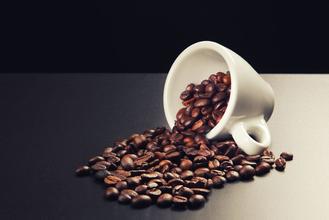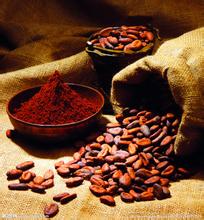The difference between crema and American Coffee in espresso
The difference between crema and American coffee in espresso,
If the cooking condition of espresso is Overestracted espresso, its crema color will be dark, and it will appear dark with a slightly black edge. On the other hand, if it is Under-extracted espresso, then the crema color is light, appears light golden yellow, and the texture is thin. Common examples are high cooking water temperature (above 93 degrees Celsius), slow flow rate, darker crema color, lower cooking water temperature (below 88 degrees Celsius), faster flow rate, lighter crema color. The higher the BrewingRatio of espresso, the darker the crema color, and vice versa. To put it simply, if you use more coffee powder, the smaller the espresso, the darker the crema will be. For example, Ristretto with 100% flush rate, its crema color is usually darker and must be darker than espresso with 50% flush rate. The espresso color with a relative flushing rate of 50% is also darker than the Lungo with a flushing rate of 33%. This is why many world flower draw champions (such as Yoshi Sawada) are accustomed to using triple filters to flush out more than 100% of the Ristretto as the subbase of the latte, because this can get the darkest background color and the most contrast effect.
To produce stable bubbles, we need some bubbles and some compounds to "wrap" the bubbles, making the bubble structure stable and elastic. The process of this chemical reaction can be thought of as the role of a surfactant. Unlike milk bubbles, which do this through egg whites, coffee uses a substance called protein melanin. It is produced by a chemical reaction of a group of mixtures during baking. In fact, scientists do not know much about the process. Neither protein nor melanin is hydrophilic, so when hot water strikes, they are naturally distributed on the surface of bubbles, so they can come into contact with more air, resulting in countless small bubbles, so we have-bubbles. There are other things-fat (the author refers to both oil and fat, fat is solid, oil is liquid), the presence of oil often destroys the structure of foam (think about it, when we make a cake, we have to remove the yolk, otherwise the fat in the yolk will lead to the failure of egg whites (that is, quickly stirring egg whites and beating them into milk bubbles).
So will the oil in the coffee cause crema to disappear quickly in a few minutes? The answer is both right and wrong. The surfactant is dissolved in water, and due to the action of gravity, the surfactant of the bubble surface will be pulled off the surface of the foam together with the water, making the foam fragile, robbing elasticity, and then quickly disappearing. The speed at which the foam disappears is related to the speed at which the water is dragged away, but the foam on the surface of a cup of coffee lasts much longer than that of a cup of fast-flushing coffee, because the liquid is much thicker than that made quickly. this is also confirmed by our taste.

Important Notice :
前街咖啡 FrontStreet Coffee has moved to new addredd:
FrontStreet Coffee Address: 315,Donghua East Road,GuangZhou
Tel:020 38364473
- Prev

French Pressed Coffee Powder to Water Ratio Coarse Flavor Description Taste Origin
The ratio of coffee powder and water is 1:16. If you like SCAA standard, you can change it to 1:18. Such changes will reduce the concentration of coffee. That is, if 500ml of water is poured into the French press, the amount of coffee beans used is 32 grams or 28 grams. II. Grinding
- Next

Italian espresso extraction time standard thick fat with foam
Italian espresso extraction time standard thick fat foam in what we often talk about coffee machine hardware, the most often mentioned is the size of the boiler and pump (pump) in fact, the coffee machine needs to pay attention to a lot of other things, the design of different pipes of materials will affect the effect of a cup of coffee, which is why responsible manufacturers use copper or stainless steel as the main material of the coffee machine. First, there is copper.
Related
- Beginners will see the "Coffee pull flower" guide!
- What is the difference between ice blog purified milk and ordinary milk coffee?
- Why is the Philippines the largest producer of crops in Liberia?
- For coffee extraction, should the fine powder be retained?
- How does extracted espresso fill pressed powder? How much strength does it take to press the powder?
- How to make jasmine cold extract coffee? Is the jasmine + latte good?
- Will this little toy really make the coffee taste better? How does Lily Drip affect coffee extraction?
- Will the action of slapping the filter cup also affect coffee extraction?
- What's the difference between powder-to-water ratio and powder-to-liquid ratio?
- What is the Ethiopian local species? What does it have to do with Heirloom native species?

